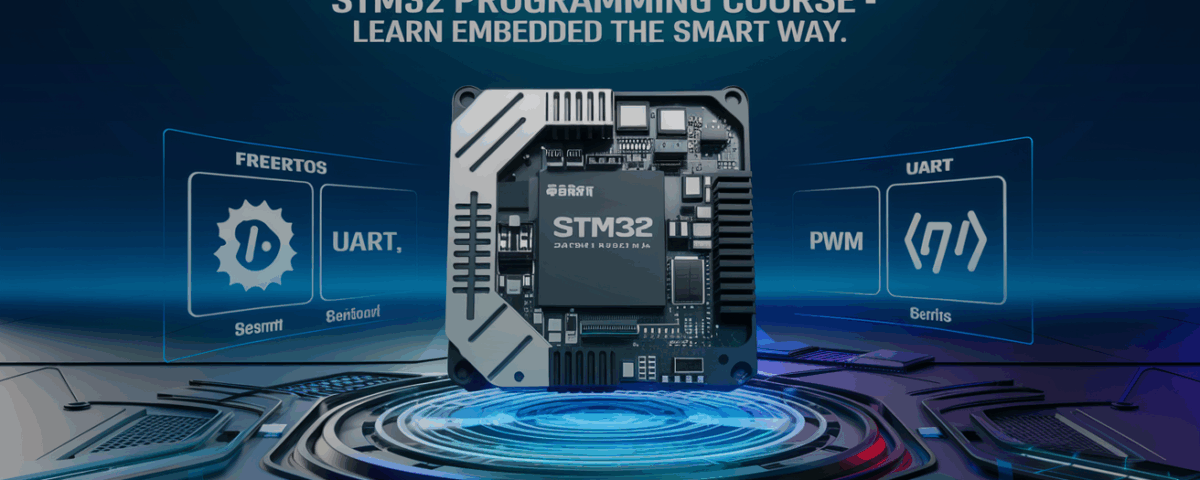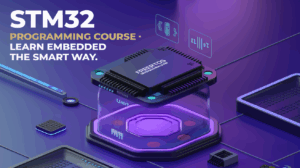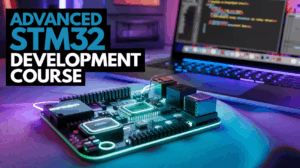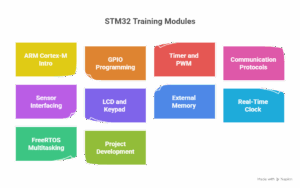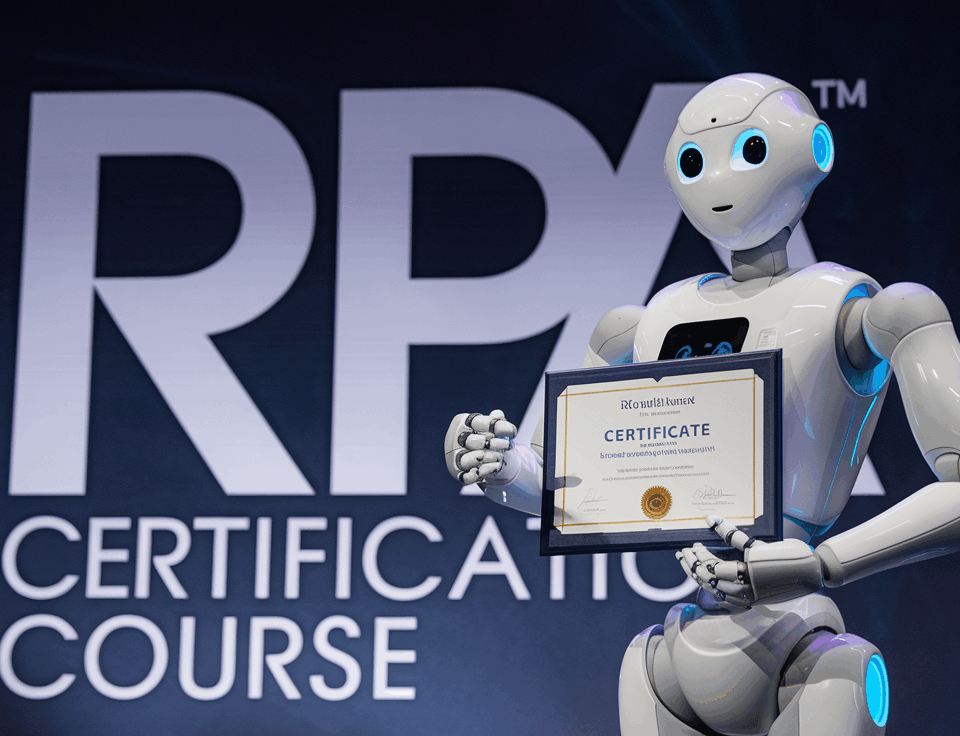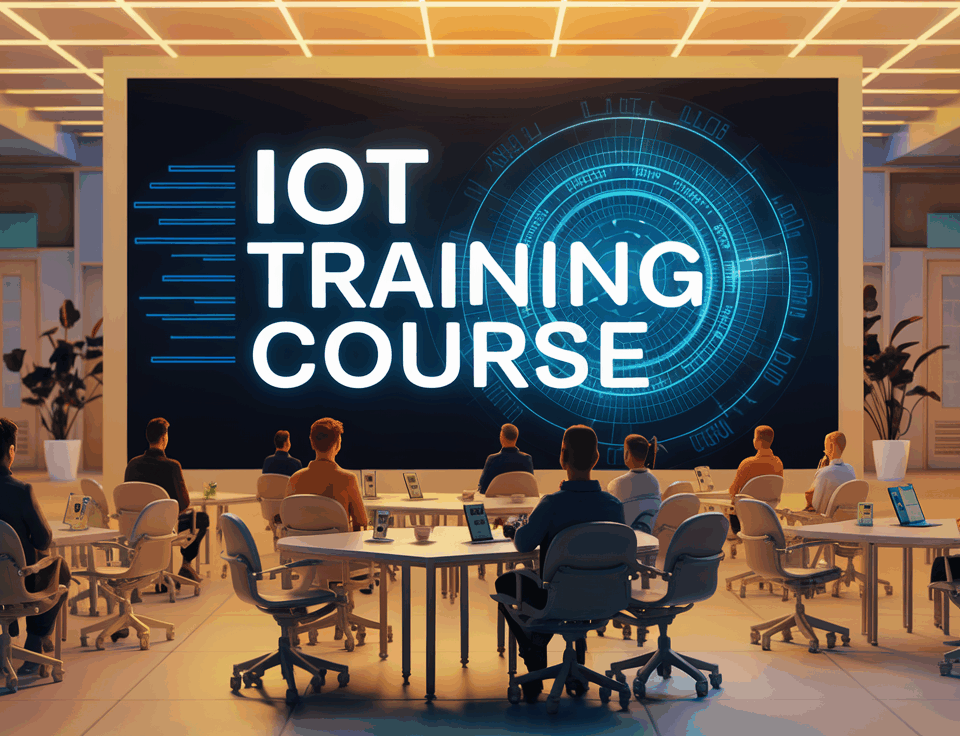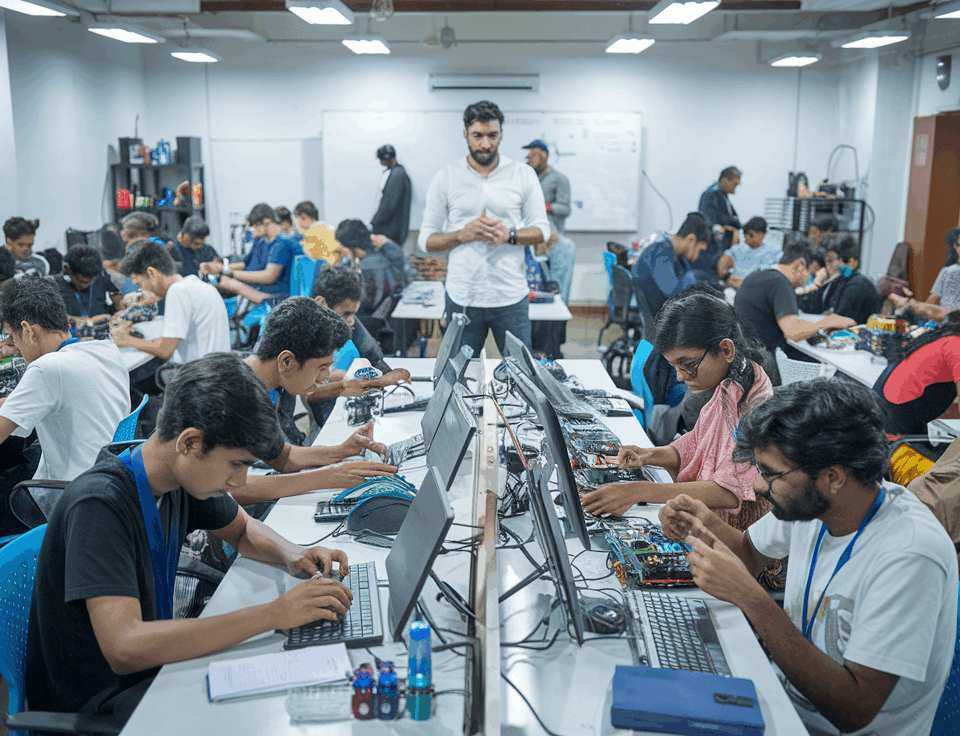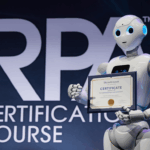
RPA Certification Course: Designed for the Next-Gen Workforce
June 26, 2025In today’s fast-evolving tech landscape, embedded systems are at the core of innovation, and mastering them has become essential for engineers, developers, and tech-savvy students. Among the many microcontroller platforms available, the STM32 programming course has emerged as a leading choice for those aspiring to gain deep expertise in embedded development.
Developed by STMicroelectronics, STM32 microcontrollers are built on powerful ARM Cortex-M cores. They are widely adopted across various industries, including automotive, industrial automation, consumer electronics, and IoT solutions. Known for their low power consumption, real-time processing capabilities, and rich peripheral support, STM32 MCUs offer unmatched flexibility and scalability in embedded applications.
This blog explores the full spectrum of what a comprehensive STM32 programming course entails. From beginner-friendly modules to advanced project-based training, you’ll gain insights into STM32 architecture, toolchains, coding practices, and real-world applications—helping you confidently step into the world of professional embedded systems development.
Table of Contents
Why Choose STM32 Microcontrollers?
Industry-Standard ARM Cortex-M Core
STM32 microcontrollers offer an ideal platform for learning and mastering embedded systems and real-time application development. Built on the industry-proven ARM Cortex-M core, STM32 devices are widely used in professional embedded solutions due to their performance, efficiency, and scalability. The STM32 family includes a diverse range of series—such as F0, F1, F3, F4, F7, and H7—that cater to both entry-level and advanced embedded requirements.
Rich Peripheral Set and Low Power Optimization
These microcontrollers are specifically engineered for low power consumption, making them suitable for battery-operated and portable applications. Additionally, STM32 devices feature an extensive set of integrated peripherals including ADC, DAC, UART, I2C, SPI, CAN, and PWM, enabling developers to build complex, high-performance systems with minimal external components.
Comprehensive Development Ecosystem
In addition to hardware advantages, the STM32 ecosystem is supported by robust development environments like STM32CubeIDE, Keil uVision, and Atollic TrueSTUDIO. Coupled with strong community support, comprehensive documentation, and regular updates from STMicroelectronics, STM32 microcontrollers remain the preferred choice for both beginners entering the embedded world and seasoned professionals developing advanced solutions.
Overview of STM32 Programming Course
Core Learning Objectives
An STM32 programming course equips learners with both theoretical foundations and hands-on skills essential for programming STM32 microcontrollers. Participants gain a solid understanding of embedded systems concepts, STM32 architecture, and Embedded C programming, setting the stage for real-world application development.
Toolchain and Peripheral Mastery
The course introduces learners to powerful development tools such as STM32CubeMX and STM32CubeIDE. Students also explore how to interface with various peripherals including UART, SPI, I2C, ADC, PWM, and GPIO—enabling the creation of interactive and sensor-based embedded systems.
Real-Time Projects and Certification
A key component of the STM32 programming course is training in Real-Time Operating Systems (RTOS), where students implement multitasking and time-critical functions on STM32. The curriculum concludes with advanced debugging techniques and project work. Upon successful completion, participants earn certification and often receive placement support, enhancing their employability in the embedded industry.
STM32 Programming Course for Beginners
Introduction to Embedded Systems
If you are a beginner with limited or no experience in microcontroller programming, a beginner-friendly STM32 programming course can be your ideal starting point. The training begins with an introduction to embedded systems, covering the key differences between microcontrollers and microprocessors. It also introduces learners to essential components of embedded hardware, laying a solid foundation for deeper exploration.
Getting Started with STM32F103 and Cortex-M3 Core
The STM32 programming course then progresses to hands-on experience with the STM32F103 microcontroller, which is based on the ARM Cortex-M3 core. This phase is crucial for familiarizing students with the hardware architecture and development capabilities of the STM32 family.
Setting Up the Development Environment
Learners are guided through the process of setting up the development environment. This includes installing STM32CubeIDE and using STM32CubeMX for peripheral configuration. These tools are essential for writing, compiling, and uploading firmware to STM32 boards.
Basic Interfacing Projects
As part of the STM32 programming course, students work on beginner-level interfacing projects. These include blinking LEDs, controlling buttons, and using LCD displays. These hands-on projects reinforce programming concepts and enhance problem-solving skills.
Building Confidence with Embedded C Programming
By the end of the beginner module in the STM32 programming course, students develop the confidence to write, compile, and debug embedded C programs. They are well-prepared to take on more complex tasks in STM32-based application development.
Advanced STM32 Development Course
Dive into Advanced Embedded Design
For professionals and experienced developers, the advanced STM32 programming course provides in-depth knowledge and practical skills required to build sophisticated embedded systems. It focuses on developing real-time, secure, and efficient embedded applications using the STM32 microcontroller platform.
RTOS Implementation with FreeRTOS
A significant part of the STM32 programming course at the advanced level is the implementation of Real-Time Operating Systems (RTOS). Learners are introduced to FreeRTOS and trained in concepts like task scheduling, inter-task communication using queues, and synchronization through semaphores—critical for building time-sensitive systems.
Power Optimization and Peripheral Communication
The course also addresses low power design techniques essential for battery-operated and portable devices. Students explore power-saving modes in STM32 such as Sleep, Stop, and Standby. Additionally, communication protocols like USB and Ethernet are covered to enable device networking and external interfacing.
Secure Bootloaders and DMA Operations
Advanced modules of the STM32 programming course include training in secure bootloaders and firmware over-the-air (FOTA) updates, which are vital for maintaining remote devices. Students also master Direct Memory Access (DMA) to optimize data handling and reduce CPU overhead, along with efficient interrupt management.
Industrial Applications and Embedded Security
The curriculum further explores the use of STM32 in real-world industrial applications such as motor control and sensor interfacing in automation and robotics. The course concludes with embedded security practices, including the use of STM32 TrustZone technology and secure firmware development, equipping learners with the skills to build robust and secure embedded systems.
STM32 Programming Course in Madurai
Premier Embedded Training in Tamil Nadu
Located in the heart of Tamil Nadu, Elysium Embedded School offers a comprehensive and industry-aligned STM32 programming course in Madurai. This program is crafted to meet the learning needs of both students and professionals, offering flexibility through various batch timings and a curriculum rooted in real-world applications.
Advanced Facilities and Expert Mentorship
The STM32 programming course at Elysium Embedded School is delivered through state-of-the-art embedded labs and guided by experienced industry professionals. Learners benefit from hands-on project development and advanced debugging sessions, ensuring a deep understanding of STM32 microcontrollers and their applications in embedded systems.
Flexible Learning with Recognized Certification
Whether you are a college student aiming to upgrade your embedded knowledge or a working professional looking to transition into embedded development, the STM32 programming course in Madurai offers weekday and weekend batches. Additionally, students receive government-approved certifications upon completion, adding significant value to their professional credentials and enhancing job prospects.
STM Microcontroller Training Course Modules
Introduction to ARM Cortex-M and STM32 Architecture
The STM32 programming course at Elysium Embedded School begins with a thorough introduction to the ARM Cortex-M core and the architecture of STM32 microcontrollers. This foundational knowledge helps students understand how STM32 devices function and how to optimize performance for different applications.
GPIO Programming with Practical Projects
Following the architectural overview, the STM32 programming course moves into GPIO programming. Students engage in hands-on exercises such as controlling LEDs and switches, which are essential for mastering input and output operations in embedded systems.
Timer and PWM-Based Applications
The next segment of the STM32 programming course explores timer functionalities and Pulse Width Modulation (PWM). These modules enable students to develop timing-sensitive applications, including motor control and frequency generation projects.
Communication Protocols: UART, SPI, and I2C
Real-time communication is a critical aspect of embedded systems. The STM32 programming course covers communication interfaces such as UART, SPI, and I2C, allowing students to transmit and receive data between devices efficiently.
Sensor Interfacing with ADC and DAC
The course further includes modules on interfacing analog sensors using ADC (Analog to Digital Converter) and generating analog signals using DAC (Digital to Analog Converter). This section of the STM32 programming course helps students understand data acquisition and signal processing in embedded systems.
LCD and Keypad Integration
To enhance user interaction, students learn to integrate LCD displays and keypads with STM32 microcontrollers. These modules provide a practical understanding of creating user interfaces in embedded devices.
External Memory and EEPROM Interfacing
The STM32 programming course also covers external memory integration and EEPROM interfacing. These lessons teach students how to manage storage for data logging and system settings in embedded applications.
Real-Time Clock (RTC) Implementation
Students are introduced to real-time clock modules and their integration with STM32. This enables them to build time-aware applications such as scheduling systems or timestamp-based logs.
FreeRTOS and Multitasking Systems
Multitasking is an advanced skill in embedded systems. The STM32 programming course includes FreeRTOS implementation, where students learn to create real-time applications using tasks, semaphores, and message queues.
Industrial-Level Project Development
To conclude the STM32 programming course, students engage in comprehensive project design and development. These projects simulate industrial scenarios, equipping learners with the experience and confidence required for real-world embedded system development.
STM32 Microcontroller Certification Course
Importance of STM32 Certification in Embedded Systems
An industry-recognized STM32 microcontroller certification course is a powerful credential that validates your expertise in embedded systems and significantly enhances your employability. In a competitive job market, this certification serves as a testament to your technical competence and hands-on experience.
Skill Development Through Practical Learning
The STM32 programming course prepares students to demonstrate advanced STM32 programming skills and a deep understanding of embedded system concepts. The training emphasizes practical, project-based learning to ensure learners are industry-ready upon completion.
Industry-Relevant Curriculum and Recognition
The curriculum is carefully structured to help learners build industrial-grade embedded projects that align with current technological demands. The STM32 microcontroller certification course offered by Elysium Embedded School is recognized by leading companies and government agencies, giving graduates a distinct advantage when applying for technical roles in embedded systems.
The certification also serves as a stepping stone for further specialization in advanced embedded domains such as IoT, robotics, and automation.
Career Opportunities After STM32 Training
Expanding Job Market for STM32 Developers
The demand for skilled embedded engineers is rising rapidly, particularly for those proficient in STM32 microcontrollers. Completing the STM32 programming course opens up a broad range of career opportunities in core technology and engineering fields. From startups to established tech giants, organizations are actively recruiting talent with STM32 expertise.
Key Roles for STM32 Professionals
Graduates of the STM32 programming course can pursue careers as Embedded Systems Engineers, Firmware Developers, IoT Developers, and Robotics Programmers. These roles require a deep understanding of microcontroller programming, peripheral interfacing, and real-time application design—all of which are covered extensively in the course.
Industry Sectors and Career Growth
Industries such as automotive, aerospace, consumer electronics, industrial automation, and medical devices offer specialized roles for STM32-trained professionals. The STM32 programming course equips learners with real-world technical skills that meet the expectations of these high-demand sectors. With this training, students gain practical, project-based experience that gives them a competitive edge in today’s tech-driven economy.
Industry Projects with STM32
Real-Time Applications for Practical Learning
One of the key advantages of enrolling in an STM32 programming course is the opportunity to work on real-time, hands-on projects that mirror actual industrial requirements. These projects are designed to bridge the gap between theoretical knowledge and practical implementation, allowing students to apply what they’ve learned in meaningful ways.
Diverse Project Domains
During the course, learners build embedded solutions such as smart home control systems, motor speed controllers using PWM, and industrial temperature monitoring setups. The curriculum also includes IoT-based health monitoring devices and GSM-based alert systems—projects that demonstrate proficiency in both hardware and software integration.
Enhancing Job Readiness through Experience
By participating in these projects, students not only deepen their technical expertise but also develop a strong portfolio that reflects their capability to handle real-world embedded challenges. These experiences gained through the STM32 programming course significantly enhance job readiness and improve placement outcomes.
Tools and Technologies You Will Learn
STM32 Development Environments
The STM32 programming course introduces students to a wide range of development tools essential for embedded system design. One of the first tools learners encounter is STM32CubeMX, which is used for peripheral configuration and code generation. This is complemented by STM32CubeIDE, an integrated development environment designed for efficient coding and debugging.
Advanced Firmware Development Tools
Beyond the standard tools, the course also covers Keil uVision and Atollic TrueSTUDIO. These platforms are commonly used in professional firmware development, offering advanced debugging, simulation, and performance optimization features.
Real-Time Operating System Integration
To build multitasking embedded applications, students are trained in the use of FreeRTOS. This open-source real-time operating system allows learners to manage tasks, semaphores, and queues, which are essential for time-sensitive embedded applications.
Hardware Debugging and System Verification
The STM32 programming course includes practical lab sessions where students use hardware tools like logic analyzers and oscilloscopes. These tools are essential for verifying signal integrity, timing accuracy, and debugging low-level hardware issues in embedded systems.
Frequently Asked Questions
1.What is the eligibility to enroll in the STM32 programming course at Elysium Embedded School?
Anyone with a basic understanding of electronics or programming is eligible to enroll. The STM32 programming course at Elysium Embedded School is specially designed for engineering students, diploma holders, and working professionals who wish to build or enhance their skills in embedded systems.
2.Do I need prior microcontroller knowledge to join the beginner-level STM32 course at Elysium Embedded School?
No, prior microcontroller knowledge is not required. The beginner-level STM32 course at Elysium Embedded School starts from the fundamentals, making it perfectly suited for newcomers to embedded systems and programming.
3.What certification will I get after completing the course?
You will receive a certification from Elysium Embedded School, which is recognized by industry leaders and government organizations.
4. Is placement assistance provided?
Yes, Elysium Embedded School offers 100% placement assistance as part of the STM32 programming course. With strong ties to leading embedded systems companies and a dedicated career support team, we help students secure job opportunities through resume building, mock interviews, and direct recruitment drives. Our industry-aligned training ensures you’re not just certified—but job-ready.
5.Can I take the STM32 course online?
Yes, the course is available in both online and offline formats, offering flexibility for learners from different locations.
Conclusion
Whether you’re a beginner stepping into the world of embedded systems or a professional aiming to elevate your skill set, the STM32 programming course offers a complete learning pathway. With a strong focus on both foundational concepts and advanced techniques, it empowers learners to design, code, and deploy embedded applications with confidence.
At Elysium Embedded School, we provide a structured and industry-relevant STM32 programming curriculum that includes beginner modules, advanced development training, and professional certification. Our expert-led sessions, hands-on projects, and placement support ensure that every student is job-ready and aligned with current market demands. The STM32 programming course in Madurai is especially curated to nurture talent in Tamil Nadu and beyond.
By mastering STM32, you open doors to numerous opportunities in IoT, automation, robotics, and real-time systems. If you’re ready to future-proof your career in embedded technology—Master STM32. Master the Future. Choose Elysium Embedded School.

